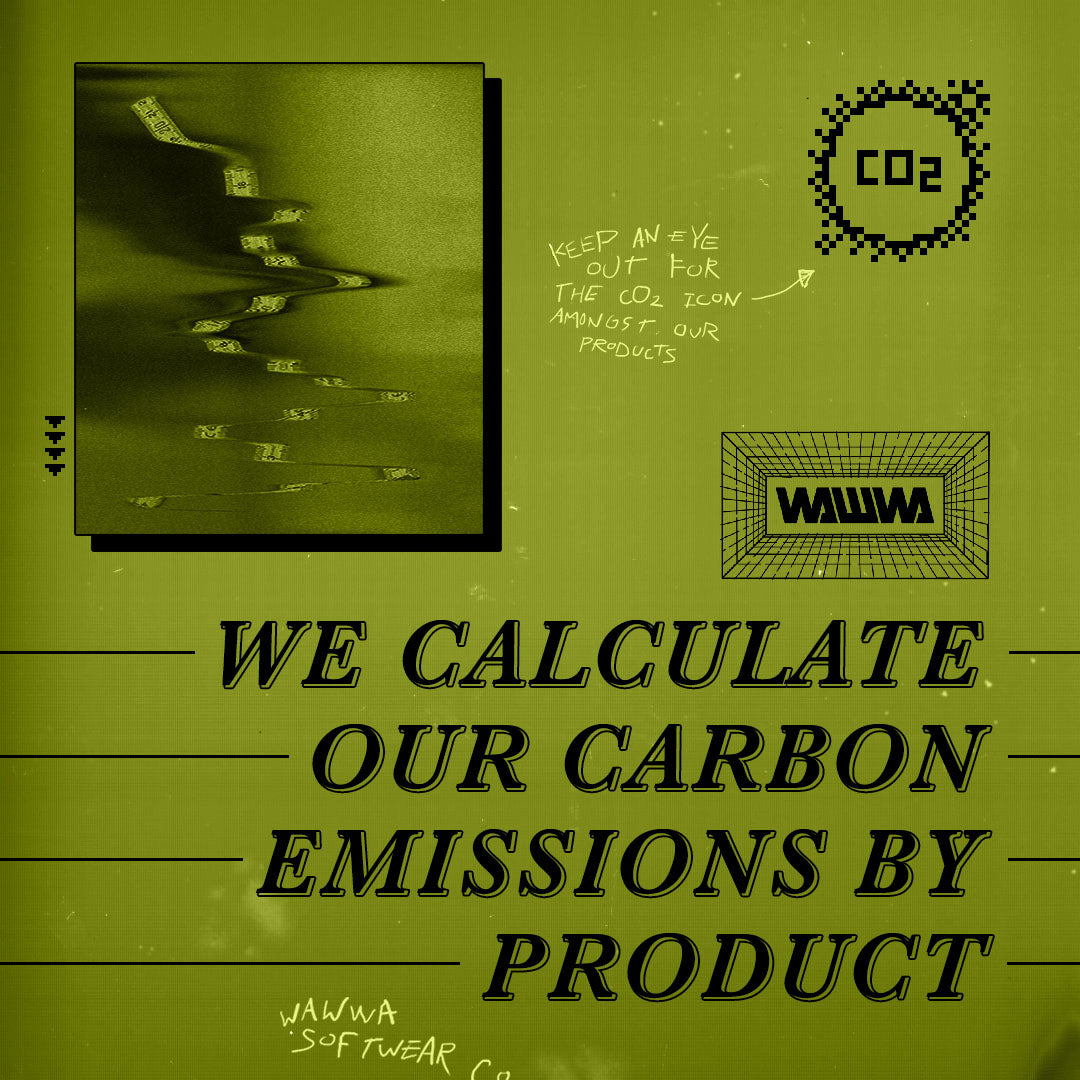Why and How We List CO2 Emissions For Clothing On Our Website

As an organisation that do our best to put planet and people before profits, we're always thinking deeply about ways we can be more transparent and better help solve the crisis our planet is going through.
In order to combat climate change, the key thing is how as a global society we tackle the problem together. Lowering carbon emissions (and ultimately reducing them entirely) seems to be the scientific consensus on the best way to tackle this.
The complication is that we can't see CO2 in the atmosphere, it's a difficult problem to contextualise. So we think the first step is putting carbon footprint labels on all products, we've long admired companies who do this, but have never had the resources to do this. But the good news, now we do and so have listed the carbon footprint of each of our products.
Of course, this is not a simple thing to do nor explain. So we'll do our best to explain the methodology behind the calculations and before someone shouts at us for getting it wrong, we're not scientists, if we've made any mistakes be gentle with us and if you have any questions then drop us an email and we'll do our best...
(before we start it's also worth bearing in mind that all figures are as estimates and we're limited by the materials in the data base andas we improve our estimates and reduce our CO2 emissions, the estimates may change and be updated)
What do the numbers mean?
So if we take the example of
1.63kg CO2e
The first part is the quantity, expressed as a weight. So 1.63kg is 1.63 kilograms. CO2 is carbon dioxide and the little e at the end stands for equivalent.
It is essentially a way of expressing the carbon footprint of something. Pretty simple so far right...?
How are they calculated?
This is where it gets sort of complicated. Previously, when we've looked at doing this, it required comissioning a university to do research. We stumbled across a wonderful tool, which has a database of a myriad of materials, fabrics and other components. The tool has then used various databases, to estimate the amount of CO2 emissions during the creation of that component.
This takes into account the country that the component was made in, the estimated energy usage for producing the component in the country in question and even the type of energy used to create it. You also add in the transport from the country it was made, to the country it is being created on and then on to us. This even factors in the type of transport used (for example, road, rail, air or sea freight) and estimates the CO2 emissions from the journey using data from google maps.
Once you've put all the components in, you then put in the energy used to manufacture it into the finished item. At the point, the calculation stops. Making it an estimate of the cradle to gate emissions.
We have had to weigh each component piece of each product, as the database is based upon weight. The number you see on the product page is based upon the weight of the total product. Where there are multiple sizes, we have estimated based upon the average weight of all the sizes.
What does cradle to gate mean?
Cradle to gate means from the start of the supply chain, through to the product being delivered to the place of sale. So typically from the farm where the cotton would be grown through to a retailers warehouse or shop (for us it's when we have the product finished, packaged and ready to ship). It doesn't factor in energy usage while being stored, or the CO2 emissions from shipping it to the customer.
You may have heard of cradle to grave, which is a much more complicated calculation and calculates the emissions over the entire product lifecycle (from the start of the supply chain until it's thrown away). This may be something we look to calculate for our stuff at some point, but at the moment it is not feasible.
How do those numbers compare to other things?
Good question. Basically using this measure, it should be possible to compare a t-shirt to a steak to a flight. The problem is that not enough companies are adopting this measure, so the numbers just look like, well, numbers, but without meaning.
Here's some numbers from other products that we've found from the internet:
-A kilo of beef - 27kg CO2e
-A flight from London to Paris - 64.2kg CO2e
-Average petrol car 10 mile journey - 2.88kg CO2e
And now, that's all we can write on the topic as whilst incredibly important, it's pretty bland. We hope that you find a better explanation from people better educated and more intelligent.
We also hope that it helps you make a better informed decision with what you consume and that it becomes more common for companies to label the emissions (and even better it becomes compulsory).



